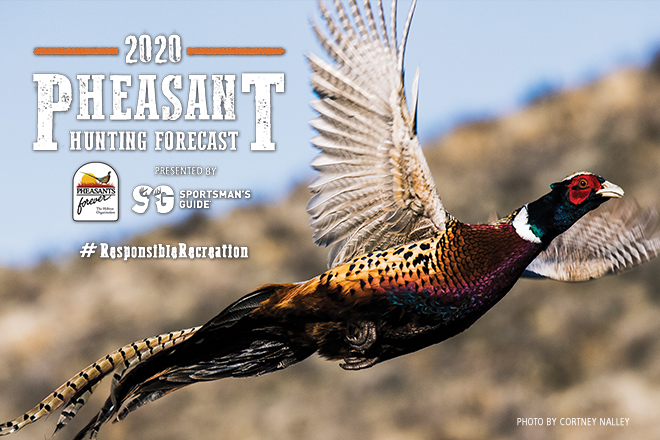
Utah hopes fall harvest keeps trending upward
By Andrew Johnson
Editor’s Note: If you’re reading this forecast, you must hunt pheasants. If you hunt pheasants and don’t belong to Pheasants Forever or you need to renew, it’s time. Since inception, PF has impacted over 19 million acres of habitat, and created over 200,000 acres of permanently public wild places to hunt and recreate. Upland habitat, public lands and hunting heritage need you. Join, renew or extend and for a limited time get a sweet PF Field Hoodie to boot!
Pheasant hunters in Utah saw increased success last year, and wildlife officials are cautiously optimistic that trend continues this fall.
In 2018 Utah hunters dropped 46,000 roosters, but that number bubbled over the 50,000-bird mark last year, according to Heather Talley, upland game coordinator for Utah Division of Wildlife Resources.
Last year’s total harvest undoubtedly includes some of the 11,000 birds that were stocked across public lands, but hopes are high that harvest totals keep trending upward.
“Last year's harvest is comparable to the overall harvest the past five years,” she reports. “More importantly, we are still displaying an increasing harvest trend over the past 10 years, and the state's biologists predict hunting to be comparable to last year.”
WEATHER AND HABITAT
The past winter was mild by Utah’s standards, and the spring was relatively dry. As a result, Talley doesn’t believe the winter or spring had a negative impact on pheasant populations, adding that nesting should have occurred at the usual time across the state’s primary pheasant regions.
Along the same lines, Talley notes Utah hasn’t experienced the summertime monsoons that have usually occurred by this time of year.
“There hasn't been as much water as previous years, but in areas where water and vegetation persist, there has been an increase of insects, which should have been beneficial to broods this year,” she says.
Heading into fall, Talley says most of the state’s habitat is a bit drier than usual, but any of the riparian corridors and wetland areas should remain prime pheasant hunting areas.
TOP SPOTS
Talley says the best places to find wild pheasant populations are in the northern and central regions of the state, primarily around the Great Salt Lake, Cache Valley and Utah Valley, and she also advises there’s a small wild population of birds that call the Richfield area home.
“We will also be releasing pen-reared birds on many of our wildlife management areas, which will be on our hunt planner on the wildlife.utah.gov website,” she says. “The best places to reference can be found on the hunt planner map, because we choose the best habitats in each region to release birds, so wild populations may exist in many of the areas we supplement with pen-reared birds.”
IF YOU GO
The state’s regular pheasant season opens Nov. 7 and closes Dec. 6. The bag limit is 2 roosters, with a possession of 6.
New for this year, the youth pheasant hunt will be held statewide from Oct. 31-Nov. 5. By extending the youth season and moving it closer to the general pheasant opener, wildlife officials hope more youth take advantage of having first crack at the state’s pheasant population. The extended youth season will have the same daily and possession limits as the regular pheasant season.
Before entering or hunting private land, hunters are reminded they need written permission from landowners. If hunters choose to hunt WIA areas, they should view the individual property rules online and register at the registration boxes, if required.
In closing, Talley reminds hunters to wear hunter orange, even though it’s not required for upland hunts in Utah. She also encourages hunters to read through
Utah’s Upland Guidebook so they’re aware that nontoxic shot is required in certain areas of the state.